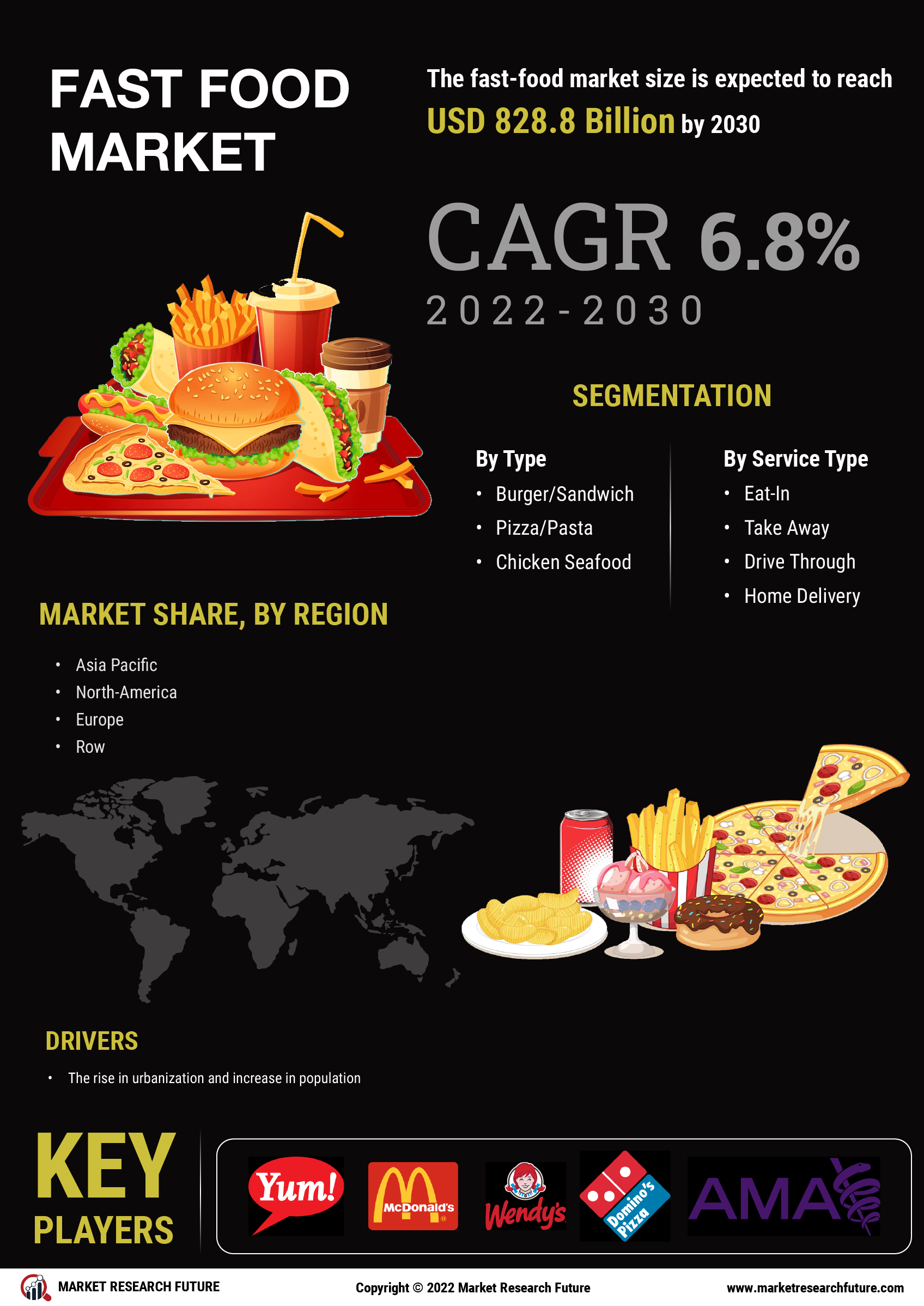Convenience and Speed
The fast food industry thrives on the principle of convenience, catering to consumers' increasingly busy lifestyles. The Global Fast Food Industry benefits from the demand for quick meal options that fit into tight schedules. As urbanization continues to rise, more individuals seek accessible dining solutions that do not compromise on quality. In 2025, the market is projected to reach a valuation of approximately 800 billion USD, driven by the need for rapid service. This trend is particularly evident in metropolitan areas where time constraints are prevalent. Fast food chains are adapting their menus and service models to enhance speed, such as implementing mobile ordering and drive-thru services. This focus on convenience not only attracts a diverse customer base but also encourages repeat business, thereby solidifying the industry's growth trajectory.
Diverse Menu Offerings
The Global Fast Food Industry is increasingly characterized by the diversification of menu offerings to cater to a wide array of consumer preferences. As dietary habits evolve, fast food chains are expanding their menus to include healthier options, vegetarian and vegan meals, and international cuisines. This trend is indicative of a broader shift towards inclusivity in food choices, appealing to health-conscious consumers and those with dietary restrictions. In 2025, it is estimated that the market for healthier fast food options will account for nearly 30% of total sales, reflecting a significant change in consumer expectations. By embracing diverse menu offerings, fast food establishments not only attract new customers but also enhance brand loyalty among existing patrons, thereby fostering sustained growth in the industry.
Technological Advancements
Technological integration plays a pivotal role in shaping The Global Fast Food Industry. The adoption of digital platforms for ordering, payment, and delivery has transformed the customer experience. In 2025, it is anticipated that online ordering will constitute over 40% of total fast food sales, highlighting the importance of technology in driving consumer engagement. Additionally, innovations such as artificial intelligence and data analytics are being utilized to optimize operations, streamline supply chains, and personalize marketing efforts. Fast food chains are increasingly investing in mobile applications and loyalty programs to enhance customer interaction and retention. This technological evolution not only improves efficiency but also positions brands to respond swiftly to changing consumer preferences, thereby reinforcing their competitive edge in the market.
Globalization of Fast Food Brands
The globalization of fast food brands has significantly influenced The Global Fast Food Industry, as chains expand their reach into emerging markets. This trend is driven by the increasing demand for Western-style dining experiences in various regions, particularly in Asia and Africa. In 2025, it is projected that the market in these regions will grow at a compound annual growth rate of over 7%, reflecting a burgeoning appetite for fast food. As brands adapt their offerings to local tastes and preferences, they enhance their appeal and foster brand loyalty among new consumers. This globalization not only contributes to revenue growth but also facilitates cultural exchange, as local cuisines are often integrated into the fast food experience. Consequently, the expansion of fast food brands into new territories is likely to remain a key driver of market growth.
Sustainability and Ethical Practices
Sustainability has emerged as a crucial driver within The Global Fast Food Industry, as consumers increasingly prioritize ethical sourcing and environmentally friendly practices. Fast food chains are responding to this demand by implementing sustainable practices, such as reducing plastic usage, sourcing ingredients locally, and promoting plant-based options. In 2025, it is estimated that nearly 25% of consumers will choose fast food brands based on their sustainability efforts, indicating a shift in purchasing behavior. This focus on sustainability not only enhances brand reputation but also attracts environmentally conscious consumers, thereby expanding the customer base. As the industry continues to evolve, the integration of sustainability into business models is likely to become a defining characteristic, influencing both consumer choices and corporate strategies.


















Leave a Comment